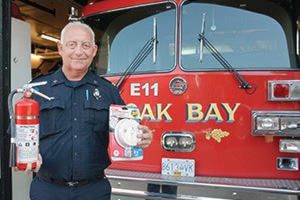• CO alarms should be installed in a central location outside each sleeping area and on every level of the home and in other locations where required by applicable laws, codes or standards. For the best protection, interconnect all CO alarms throughout the home. When one sounds, they all sound.
• Follow the manufacturer’s instructions for placement and mounting height.
• Choose a CO alarm that is listed by a qualified testing laboratory.
• Test CO alarms at least once a month; replace them according to the manufacturer’s instructions.
• If the audible trouble signal sounds, check for low batteries. If the battery is low, replace it. If it still sounds, call the fire department.
• If the CO alarm sounds, immediately move to a fresh air location outdoors or by an open window or door. Make sure everyone inside the home is accounted for. Call for help from a fresh air location and stay there until emergency personnel declare that it is safe to re-enter the home.
• If you need to warm a vehicle, remove it from the garage immediately after starting it. Do not run a vehicle or other fueled engine or motor indoors, even if garage doors are open. Make sure the exhaust pipe of a running vehicle is not covered with snow.
• During and after a snowstorm, make sure vents for the dryer, furnace, stove, and fireplace are clear of snow build-up.
• A generator should be used in a well-ventilated location outdoors away from windows, doors and vent openings.
• Gas or charcoal grills can produce CO — only use outside.
For more information contact the Oak Bay Fire Department’s Fire Prevention Division 250-592-9121.
Capt. Rob Kivell is the Oak Bay Fire Department’s fire prevention officer.
